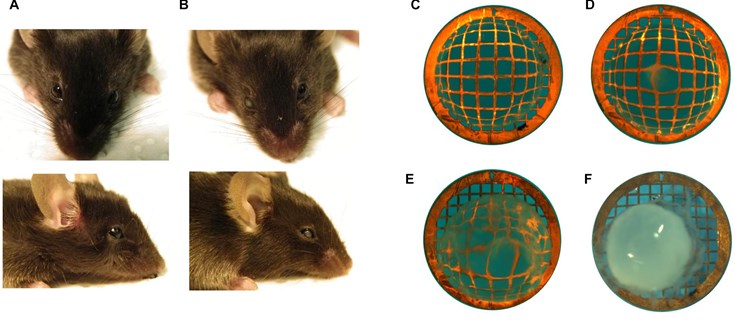The ‘human molecular genetics’ research group of the Bellvitge Biomedical Research Institute, led by Dr. Virginia Nunes (IDIBELL – UB – CIBERER), has participated in a research study demonstrating that the amino acid transporter LAT2 causes congenital cataracts in both animals and humans.
This study, published in Frontiers in Physiology, has discovered that LAT2 ablation causes cataracts and that the incidence of this disease increases in cases in which TAT1 ablation also exists – in mouse models of loss of function of these two amino acid transporters. The work has also been co-led by Manuel Palacín (IRB – UB – CIBERER) and François Verrey and Barbara Kloeckener-Gruissem, from the University of Zurich.
Cataracts account for approximately 50% of global blindness and have been associated with problems in the transport of solutes and water through the cellular barriers of the lens. Age-related cataracts (ARC) are considered a multifactorial disease, while early-onset cataracts, which are congenital or appear with the first years of life, affect a minority of patients (between 3-6 / 10,000) and present an autosomal recessive inheritance pattern.
Both LAT2 and TAT1 are expressed in the ciliary body of the mouse and LAT2 also in the epithelium of the lens. The ablation of LAT2 leads to a drastic decrease in the levels of essential amino acids in the lens, which is aggravated by the ablation of TAT1.
On the other hand, the analysis of the SLC7A8 gene carried out in this study, which codes for LAT2, has allowed researchers to identify a homozygous mutation, which eliminates the expression of LAT2, in a family with two affected children who presented congenital cataracts with an autosomal recessive inheritance pattern. Mutations in LAT2 could also contribute to ARC since patients with mutations in LAT2 have been found in heterozygosis and that affects the trasnporter function.
A larger study is needed in order to determine the incidence of mutations in LAT2, and the possible contribution of mutations in TAT1 to cataracts associated with age. The obtained data allow researchers to establish that SLC7A8 is a new cataract gene in both humans and mice. This opens up the possibility that mutations in other amino acid transporters operating in the lens may be involved in the genesis of cataracts in both mouse and humans.

